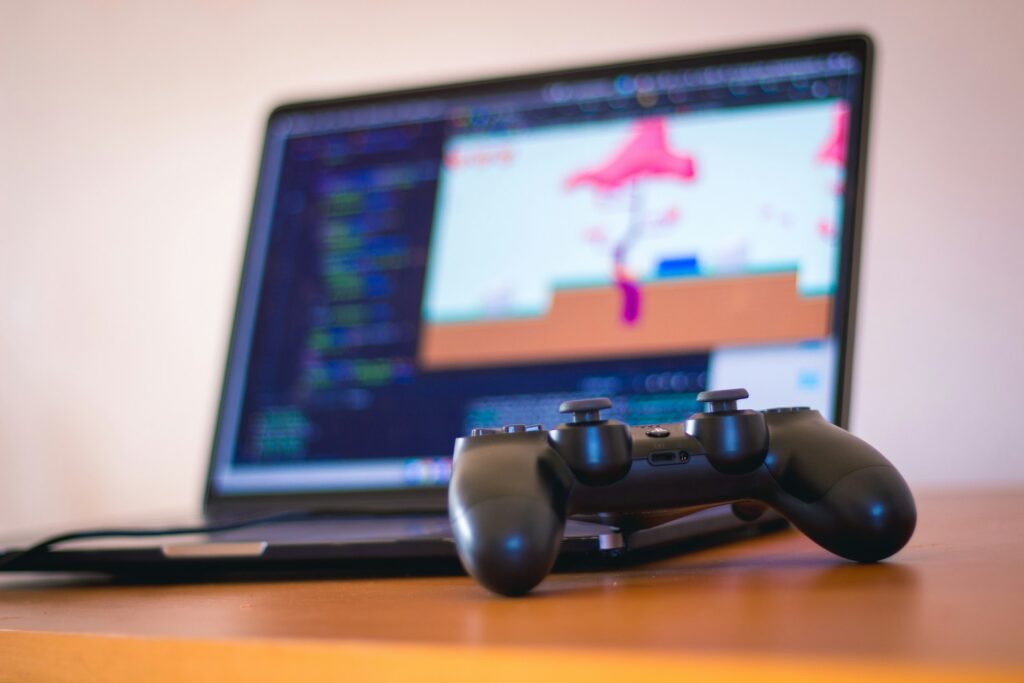
How to Start Making Games (Part 1): Finding Your Path
So, you want to make games. Maybe you’ve always wondered how your favorite worlds are built, or maybe you’ve had an idea floating around for years. The good news? You don’t need a huge team, expensive software, or a computer science degree to begin.
Game development has never been more accessible. With a little time and the right tools, you can create something fun even if you’ve never written a line of code. The goal isn’t to make Call of Duty on your first try. It’s to learn, experiment, and finish your first small project.
Not sure where to start? Use this guide to find your first game engine, learn the basics, and build confidence as a new developer.
📚 Contents
- Pick an Engine That Fits You
- Learn by Following, Not Inventing
- Start Small and Prototype
- Use Free Assets to Bring Ideas to Life
- Join the Community
- Build Momentum, Not Masterpieces
- Final Thoughts
⚙️ Step 1: Pick an Engine That Fits You
Your choice of game engine shapes how you’ll work, but don’t overthink it. Every major engine can help you make something great. Here’s a quick guide to help you decide where to start:
| Engine | Best For | Why You Might Love It |
|---|---|---|
| Unity | 2D & 3D beginners | Massive library of tutorials and community help |
| Unreal Engine | 3D & cinematic games | AAA-quality visuals, visual scripting (Blueprints) |
| Godot | Indie, open-source projects | Free, lightweight, and great for experimentation |
| GameMaker | Simple 2D games | Drag-and-drop tools, perfect for pixel art |
| Phaser.io | Web & mobile games | JavaScript-based and includes a visual editor for drag-and-drop 2D game creation |
| Three.js | 3D experiences on the web | Ideal for creative coders and interactive browser projects |
💡 Pro tip: Every programming language looks different, but most share the same logic. The main difference is syntax (the way things are written) and the patterns you use to solve problems. Learn one, and the next comes much easier.
👉 Pro tip: Don’t spend weeks researching. The best engine is the one you actually open and start learning.
🧭 Step 2: Learn by Following, Not Inventing
When you’re starting out, it’s easy to feel like you need to create something original right away. The truth? The best way to learn is by following tutorials and recreating existing games. That’s how every developer learns the fundamentals.
Here are some of the best places to start:
- Brackeys on YouTube – The gold standard for Unity beginners & now Godot too.
- GDQuest – Structured lessons for learning Godot from scratch.
- Unreal Sensei – Great pacing for Unreal newcomers.
- HeartBeast – Focused 2D tutorials in GameMaker and Godot.
- Unity Learn – Offical Unity learning
Follow along, then make it your own. Change jump height, add a new mechanic, or replace art with your own. Small tweaks teach you how systems fit together and spark creativity.
If you want to learn how to promote your project once it’s ready, check out our guide on making a press kit and how to write a press release for your indie game.
🎮 Step 3: Start Small and Prototype
It’s tempting to dream big, but your first project should be something achievable, something you can finish. Think of it as your training ground.
Try creating:
- A Pong or Breakout clone
- A single-level platformer
- A simple clicker or endless runner
Once you’ve got the basics working, focus on how it feels to play.
Here’s the secret: a fun prototype made of boxes and circles is better than a beautiful game that’s not fun.
Game feel, how the jump lands, how movement responds, how feedback sounds, matters far more than visuals at this stage.
Even top studios spend months polishing movement and feedback before touching final art. That’s where the magic happens.
🧩 Step 4: Use Free Assets to Bring Ideas to Life
You don’t need to be an artist or composer to start. Free assets let you build faster and focus on gameplay.
Start with Kenney.nl, it’s packed with professional-quality assets, all free to use in your projects.
Other great sources include OpenGameArt.org and the Unity Asset Store or Godot Asset Library.
Try this workflow:
- Download a few sprites or tiles.
- Import them into your chosen engine.
- Prototype your idea visually.
Seeing your game come to life, even with placeholders, is incredibly motivating.
🌍 Step 5: Join the Community
Game development is full of people who remember exactly what it’s like to start from scratch. Join a Discord for your engine of choice, hang out in Reddit’s r/gamedev, or take part in an itch.io game jam.
You’ll learn faster, find encouragement, and see that everyone’s first game was a little rough. That’s normal, and it’s part of the fun.
💡 Step 6: Build Momentum, Not Masterpieces
Your first few projects aren’t meant to be masterpieces. They’re stepping stones. The key is momentum.
Once you finish a project, no matter how small, you’ll have learned how to:
- Open an engine and set up a scene
- Add movement and input
- Use assets effectively
- Export and share a build
That’s the foundation every successful developer builds on. Finishing something gives you confidence and skill that watching tutorials alone can’t.
Final Thoughts
Getting into game development isn’t about instant success, it’s about discovery. Start small, focus on feel over visuals, and keep learning. The day you finish your first playable game, you’ve already done what most people never do.
You don’t need to make the next Call of Duty. Just make your first you.
Stay tuned for Part 2, where we’ll cover how to design your first original game idea and build it into a working prototype.